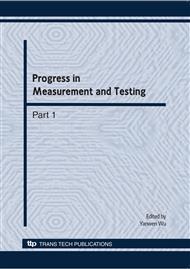p.1061
p.1066
p.1070
p.1075
p.1080
p.1086
p.1092
p.1097
p.1103
Study on Disambiguation by Statistical and Logical Reasoning
Abstract:
In order to find an effective for the disambiguation, we explore the ways of complementing statistical approaches with the use of ‘domain theories’, and suppose that disambiguation decisions can supply tacit information about such theories, and the theories can be in part automatically induced from such data. The experiment results can be used successfully in disambiguating other sentences from the same domain.
Info:
Periodical:
Pages:
1080-1085
Citation:
Online since:
May 2010
Authors:
Price:
Сopyright:
© 2010 Trans Tech Publications Ltd. All Rights Reserved
Share:
Citation:


